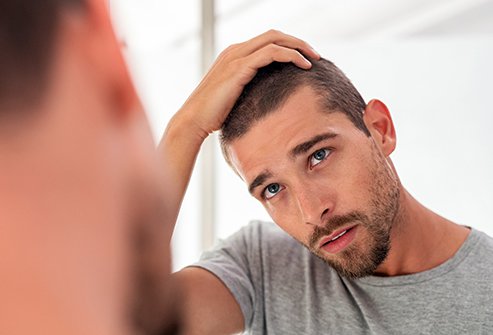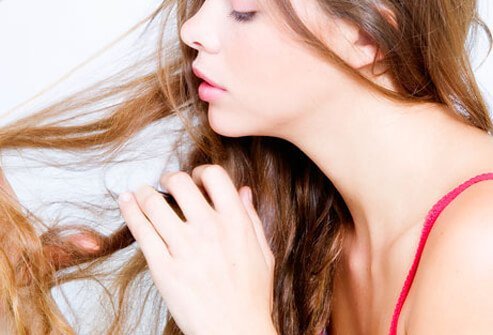
Hair loss in men is often caused by heredity, a skin disorder, a scalp infection, or a change in hormone levels.
A thinning hairline or a bald area on the top of the head is quite noticeable.
- Approximately 90 percent of men will experience some sort of hair loss over their lives, which frequently leads to symptoms of poor self-esteem, worry, and depression.
- Hair loss affects more than 60 percent of men under the age of 35 years, and more than 80 percent of men by the age of 50 years.
Not all hair loss is male pattern baldness. Male pattern baldness is also known as androgenetic alopecia where the hairline recedes back, and a bald spot is created on top of the head. It is seen both in males and females.
Hair loss may be a consequence of heredity, a scalp infection, a skin disorder, or a change in hormone levels.
5 best male hair loss treatment
- Medications
- Minoxidil:
- Minoxidil is a topical serum that was originally designed as an oral blood pressure drug. It increases hair growth, thickness, and strength. Topically, 5 percent minoxidil is utilized for hair growth therapy in men.
- Minoxidil encourages hair development, strengthens strands, and stimulates hair follicles. Minoxidil can enhance the density and thickness of hair; in other words, the strands re-grow fuller and healthier.
- Hair shedding is seen with the initial use of minoxidil, which subsides gradually. Allergic dermatitis, itchy scalp, skin irritation, and redness are some side effects of minoxidil.
- Women are noted to have more negative effects than men from minoxidil. Women are prone to develop unwanted hair, particularly facial hair, after the use of minoxidil. They may also experience headaches, dizziness, and scalp itchiness. Pregnant women have not been prescribed minoxidil.
- Finasteride:
- Alterations in the male hormones can cause hair loss. Hair follicles convert testosterone to dihydrotestosterone. Hair follicles that are sensitive to dihydrotestosterone shrink. This is a natural aging process in men. But in some men, this process occurs early in life causing hair loss. Finasteride can help prevent additional hair loss. It works by preventing testosterone from being converted to dihydrotestosterone.
- Finasteride is taken as oral tablets and should be taken when prescribed by a doctor. Finasteride can cause various side effects such as allergic reactions to the drug, mood swings, reduced sexual desire, erectile dysfunction, depression, and, rarely, breast cancer.
- Minoxidil:
- Laser treatment
- Studies reported that low-level laser treatment is found to be safe and helpful for both men and women in terms of hair growth. The use of laser combs and other laser treatments reduces inflammation in the follicles and enhances circulation, which promotes hair growth. This is a relatively new procedure without any extensive research.
- Surgical treatment
- While not exactly a hair growth therapy, transplants will cover up those follicular bald areas. This may require several visits for optimal results.
- The two most widely used approaches are as follows:
- Follicular unit transplantation: Skin is taken from the back of your scalp where hair growth is abundant and the follicles are extracted from the skin before being surgically implanted in balding regions.
- Follicular unit extraction: Rather than removing the skin, this procedure extracts hair follicles from one area of the scalp and transplants them to balding areas.
- Platelet-rich plasma (PRP)
- PRP is a procedure where some blood is drawn from your body, and it is subjected to rapid spinning in a machine. This separates platelets from the rest of the blood. The separated platelets are reinjected into the areas where you desire to have hair growth.
- PRP comprises a variety of growth factors and proteins that help speed up tissue restoration. Various studies reported that PRP can restore hair loss caused by follicular damage and decreased hair loss while increasing hair diameter and density.
- Lifestyle changes
- Poor lifestyle habits can result in hair loss. Hair loss has been related to smoking, stress, and a bad diet. Hair loss can occur as a result of poor hair care on occasion. Pulling or plucking your hair will damage the roots and the growth of the hair declines. If the roots are not repaired, it leads to permanent hair loss. Therefore, you should avoid activities that are prone to harm your follicles. This also includes braiding, straightening, using hazardous chemicals, receiving hot oil treatments, and other practices.
- Receiving gentle massages to the scalp regularly can stimulate follicles and prevent hair loss. You can use natural oils such as coconut oil or peppermint oil for scalp massages. Intake of biotin and zinc supplements may also improve hair growth. Consult your doctor before taking any supplements or medications for hair growth. Some studies suggest that onion juice application may promote hair growth although there is a lack of enough scientific evidence. Onion juice can even irritate your scalp and cause more hair issues.

SLIDESHOW
Your Hair and Scalp Can Say a Lot About Your Health See Slideshow
Medically Reviewed on 5/4/2022
References
Medical Treatments for Balding in Men: https://www.aafp.org/afp/1999/0415/p2189.html
Hair Loss: https://my.clevelandclinic.org/health/diseases/21753-hair-loss